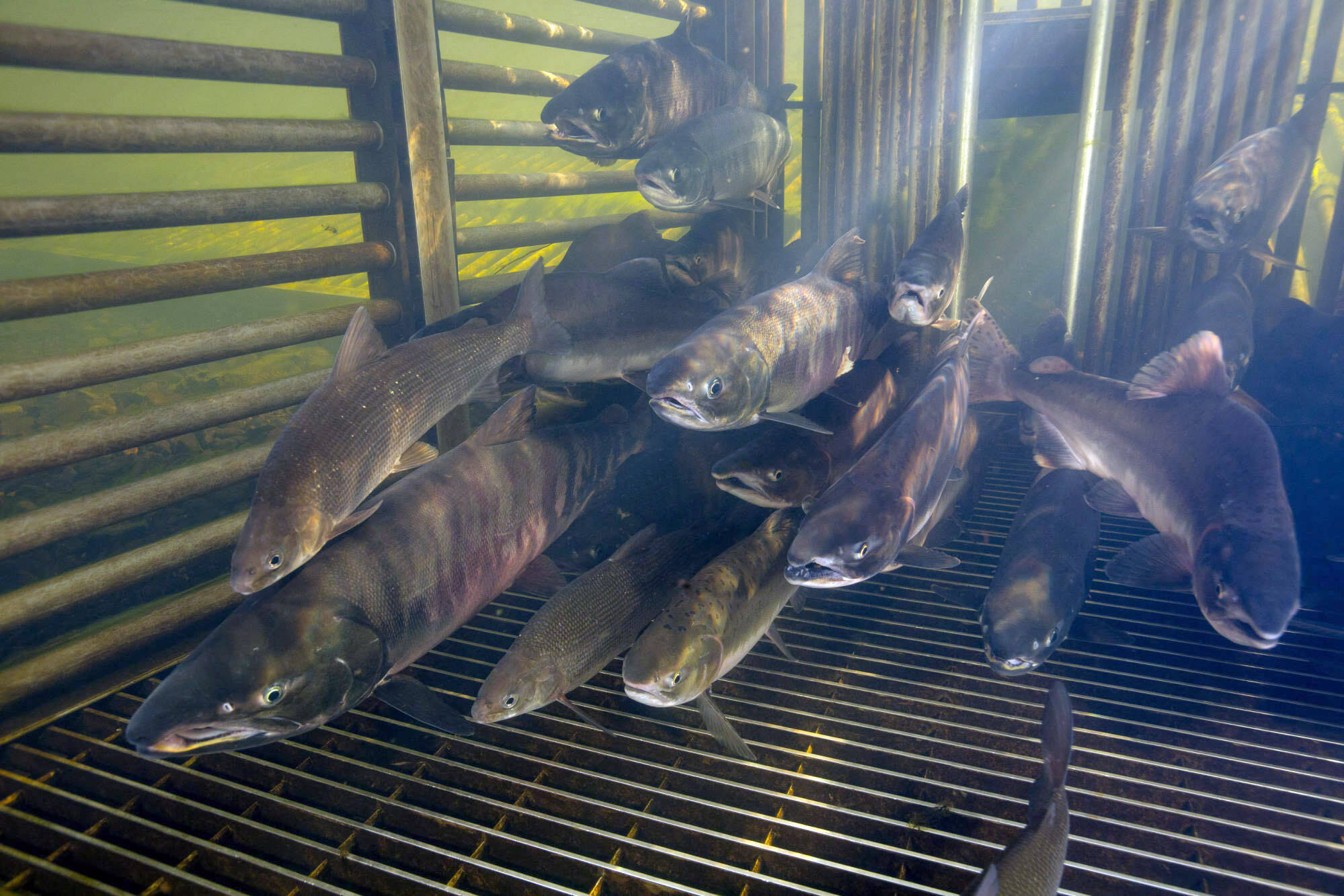During a routine physical exam, your doctor checks your vitals: Weight, heart rate, blood pressure and so on. Annual visits establish a baseline of personal health against which unhealthy trends can be detected before they become risk factors.
We need baselines for the health of salmon runs too. Weirs help us to establish those baselines and then detect changes in populations over time. They also help fisheries managers evaluate and adjust their management actions, reconstruct past salmon abundances and forecast future salmon returns.
So, get your scrubs on. We’re going to dissect how weirs work and what they tell us about the health of much-valued wild Alaska salmon.
The weirs we run in Alaska are temporary, permeable “fences” across rivers with an opening in the middle. We construct our weirs with panels of evenly spaced PVC pickets aligned parallel to the direction of flow.
The upstream end of each panel is anchored to the river bottom and the downstream end is lifted above the surface by a resistance board that planes upward in flowing water.
The pickets don’t go all the way across the river. They guide migrating fish into a trap box that is occasionally closed so fisheries biologists can briefly take a few measurements and samples from a subset of fish: length, sex, scales for aging and a small fin clip for genetic analyses.
This information can tell us many things about the health of salmon populations. For example, we discover if fewer bigger, older females are returning to a particular tributary or how different populations are contributing to “mixed-stock” harvests downstream.
Finally, fish enter a narrow chute and pass in front of a video box on their way out. Standard video components include a sealed box filled with clear water that houses a video camera, pond lights and a digital video recorder equipped with motion detection software.
Power includes green energy sources like solar panels. With this setup we can record passing fish 24 hours a day even when the water is cloudy. The analog video signal is routed to the digital video recorder and converted to digital format instantaneously.
The digital video recorder removes blank footage and only reports motion events. The video footage lets us see the entire run of fish through time. The remote video cameras only record motion events, which saves staff many hours during review.
Much like a team of doctors and nurses and other specialists keep tabs on the human health, teams of fisheries professionals keep tabs on the health of Alaska’s salmon runs. For well over two decades, fisheries biologists have been pioneering innovative underwater video technology at weirs.
This has led to more accurate and efficient assessments of the health of salmon populations returning to the tributaries of the Kenai River in Kenai National Wildlife Refuge.
In Alaska, Fish and Aquatic Conservation staff are currently operating weirs in Yukon Delta, Yukon Flats, Koyukuk and Kenai national wildlife refuges. Weirs are one way we collect information to make management decisions that ensure that the fisheries are here for future generations.
In next week’s Refuge Notebook article, we will be talking more specifically about Kenai River chinook salmon.
Katrina Liebich is co-host of the award-winning “Fish of the Week!” podcast and part of the Alaska External Affairs team with the U.S. Fish & Wildlife Service. To find more Refuge Notebook Articles go to https://www.fws.gov/kenai-refuge-notebook


